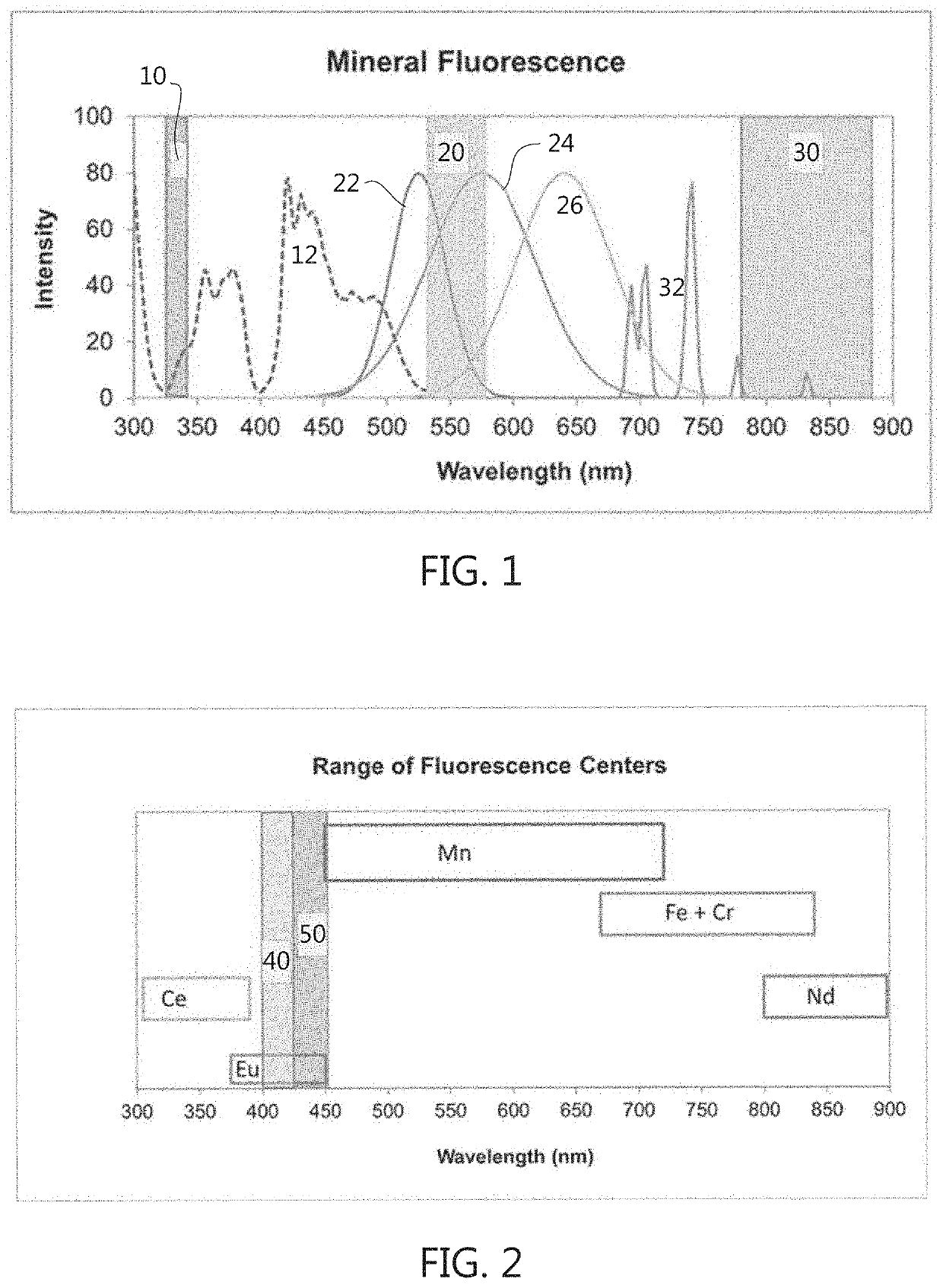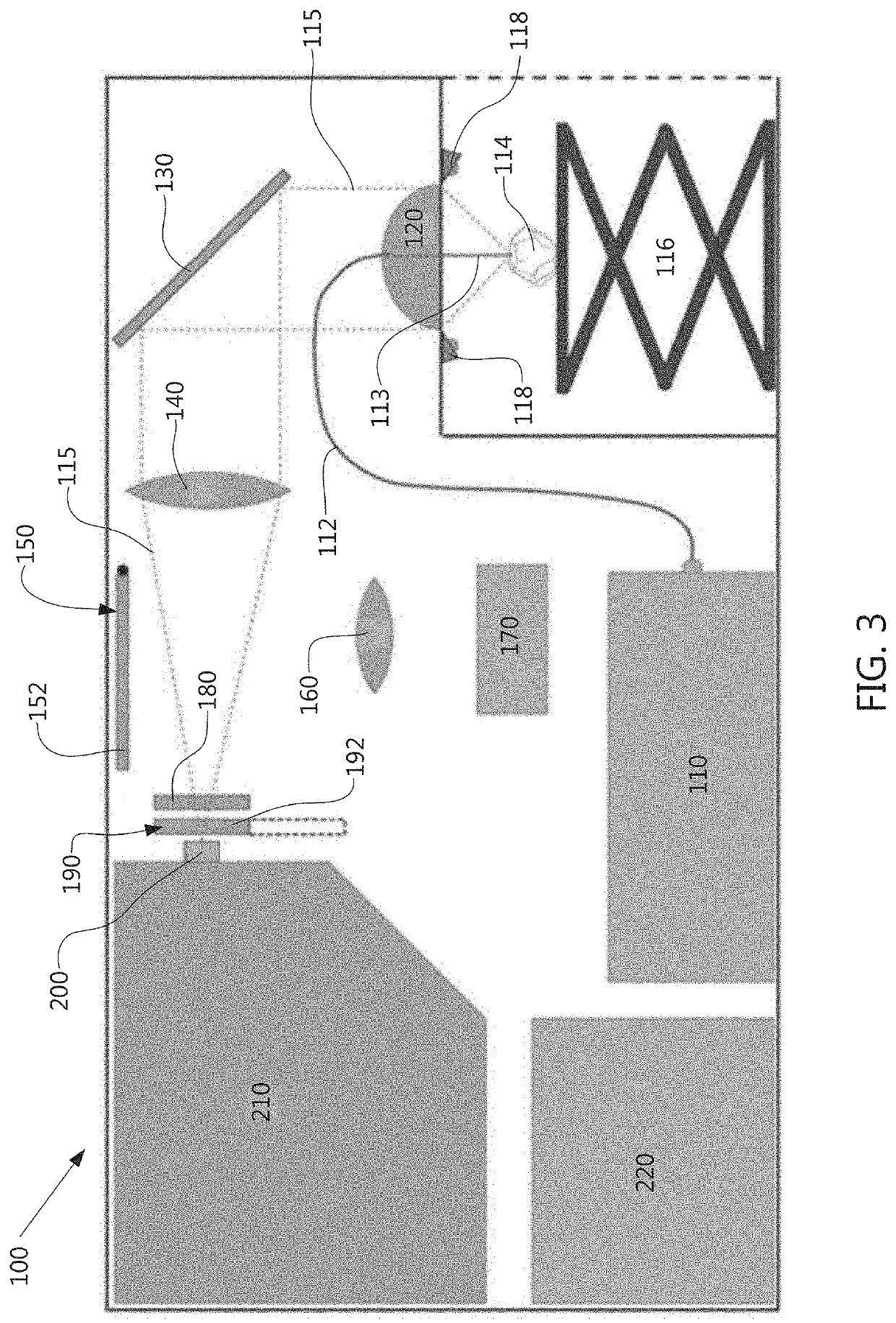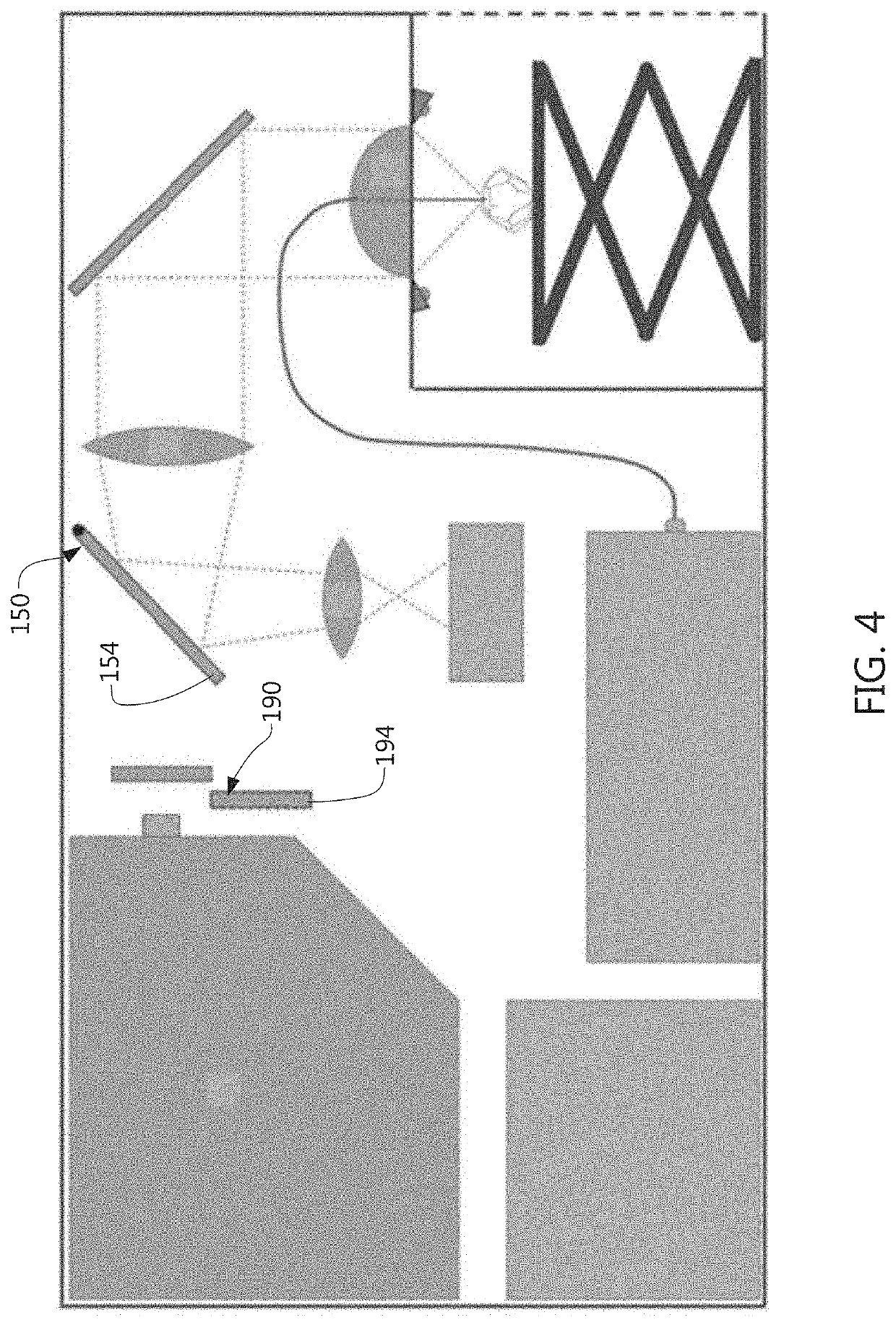However, when an analytical process is highly expensive, requires high amounts of
physical space and / or physical support, requires high levels of maintenance and calibration, and / or requires a high level of education and training to operate, it is also impractical—it cannot be widely deployed to or readily available to a high percentage of those individuals / institutions who routinely need analytical results.
This type and amount of
sample preparation means that PXRD requires a sample-preparation
delay before each analysis and is extremely difficult-to-impossible to apply to small mineral grains or mineral grains in situ (without extraction).
Additionally, despite the reduction in instrument size that has been achieved for PXRD, it continues to be impractical to attempt to employ PXRD out into a field investigation environment.
However, a general lack of optimization of the Raman technology for application to minerals (and man-made crystalline solids as well) has prevented widespread adoption of Raman technology for RMI.
The performance challenges of Raman technology often intersect or even compete with one another resulting in performance trade-offs.
The technology required to increase spectral range generally reduces resolution.
Again, there are technical trade-offs between sensitivity and other performance factors.
Many sample substances do not respond to the
laser light with
fluorescence emission, however, when
fluorescence light is emitted from the sample it is often so much more intense than the Raman response that the Raman spectrum of the sample cannot be observed at all.
The limitations of this approach for PRMI are expense and complexity.
Employing even two lasers requires much more training and experience to operate and typically results in a Raman
system that costs 50% to 90% more than the same model configured with only one laser.
Raman systems with 4 and 5 lasers require considerable space, cost, and maintenance.
The limitations of this approach for PRMI are spectral artifacts and breadth of application.
In addition, the greatest limitation is probably the fact that shifted-excitation is ineffective for samples producing fluorescence orders of magnitude brighter than Raman intensities.
The limitations of this approach for PRMI are expense and sensitivity.
Until recently all gated-Raman systems were expensive and complex custom-made optical-bench systems.
Such a
system may have to collect data for an impractical period of time for the many minerals that are weak Raman scatterers.
The primary limitation of this approach for PRMI is sensitivity.
Since many minerals are weak Raman scatterers, the
IR laser Raman
system has limited application to minerals as a whole.
UV lasers: Raman systems employing UV lasers are relatively rare due to their spectral performance challenges and expense.
A UV Raman system has to examine a narrow spectral region, making it technologically difficult to achieve adequate
spectral resolution and the minimum Raman shift of such systems is typically 350 to 450 nm.
The limitations of UV Raman for PRMI are expense and performance.
The components required to meet the performance challenges in the UV are expensive and many, many minerals have important Raman peaks at Raman shifts below 400 nm.
The limitations of Anti-Stokes Raman include shorter
wavelength fluorescence and Raman intensity limitations.
One challenge for a portable / field Raman system is to provide for
laser light delivery,
signal light collection, and sample
visibility for aiming through a single optical port.
Many hand-held units and some portables do not even try to provide for optical analysis aiming and depend upon the analysis site being large enough to simply point the optical front end of the analyzer at it.
 Login to View More
Login to View More  Login to View More
Login to View More 


